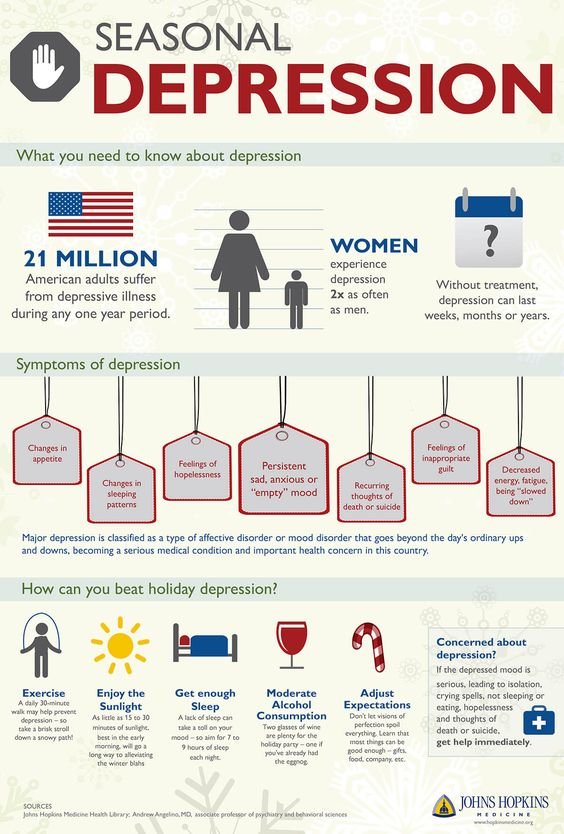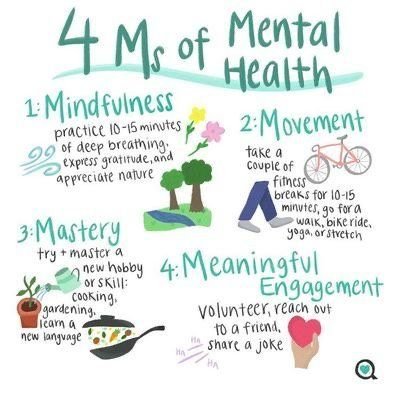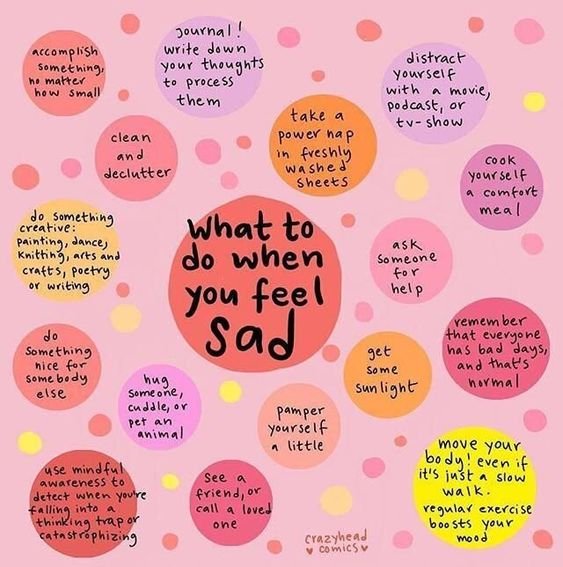Seasonal Depression
How a Social Support System Contributes to Psychological Health
How a Social Support System Contributes to Psychological Health
Updated on August 29, 2022
A social support system is often identified as a key component of solid relationships and strong psychological health, but what exactly does it mean? Essentially, social support involves having a network of family and friends that you can turn to in times of need.
Whether you are facing a personal crisis and need immediate assistance, or you just want to spend time with people who care about you, these relationships play a critical role in how you function in your day-to-day life.
It is social support that builds people up during times of stress and often gives them the strength to carry on and even thrive.
But social support is certainly not a one-way street. In addition to relying on others, you also serve as a form of support for many people in your life.
Why a Strong Social Support System Is So Important
Psychologists and other mental health professionals often talk about the importance of having a strong social support network. When trying to reach our goals or deal with a crisis, experts frequently implore people to lean on their friends and family for support.
Research has also demonstrated the link between social relationships and many different aspects of health and wellness. Poor social support has been linked to depression and loneliness and has been shown to alter brain function and increase the risk of the following:
Alcohol use
Cardiovascular disease
Depression
Suicide
In one study of middle-aged men over a seven-year period, those with strong social and emotional support were less likely to die than those who lacked such relationships.
So, which aspects of our social environments are so vital to health? And how exactly do our social environments impact our overall well-being? There are two essential aspects of our social worlds that contribute to health: social support and social integration.
Social Support
Social support refers to the psychological and material resources provided by a social network to help individuals cope with stress. Such social support may come in different forms, and might involve:
Helping a person with various daily tasks when they are ill or offering financial assistance when they are in need
Giving advice to a friend when they are facing a difficult situation
Providing caring, empathy, and concern for loved ones in need
Social Integration
Social integration is the actual participation in various social relationships, ranging from romantic partnerships to friendships. This integration involves emotions, intimacy, and a sense of belonging to different social groups, including being part of a:
Family
Partnership
Religious community
Social activity
Experts suggest that being integrated into such social relationships confers a protective benefit against maladaptive behaviors and damaging health consequences.
Types of Social Support Systems
Supportive social networks can come in different forms and play different roles in your life.
Emotional Support
Sometimes the people in your life provide emotional support. They back you up when you need it and are there with a shoulder to cry on when things don't go your way. This type of support can be particularly important during times of stress or when people are feeling lonely.5
Instrumental Support
In other cases, the people in your social network might provide instrumental support. They take care of your physical needs and offer a helping hand when you need it. This might involve bringing you a hot meal when you are sick or giving you a ride when your car is in the shop. Such support is important when people have immediate needs that must be addressed.
Informational Support
People can also provide what is known as informational support. This can involve providing guidance, advice, information, and mentoring. Such support can be important when making decisions or big changes in one's life.
By having this form of support, people may feel less anxious and stressed out about the problems they are trying to solve thanks to the advice of a trusted friend, mentor, or loved one.
As you might imagine, people in your social networks may take on different roles. A teacher might provide informational support, while a parent might provide all three types. By having a solid social support network, you are more likely to receive the type of support that you need when you really need it.
Health Benefits of Social Support
So now that we understand that our social support systems involve both different types of social support as well as integration into different social groups, it is time to take a closer look at exactly how these social relationships influence both physical and mental health.
Healthy Choices and Behaviors
Participation in social groups has a normative influence on behaviors, often influencing whether people eat a healthy diet, exercise, smoke, drink, or use illegal substances.
Clearly, social groups can sometimes have a negative influence in this regard when peer pressure and influence leads to poor or even dangerous health choices. However, group pressure and support can also lead people to engage in healthy behaviors as well.
If you have ever tried to give up a bad habit, such as smoking, you probably realize just how important social support can be. If your social connections do not support you, it can make success much more difficult. If your friends and family offer support and encouragement, you may find achieving your goal much more possible.
Coping With Stress
Social support also helps people to cope with stress. Stress has been shown to have serious health consequences ranging from reduced immunity to increased risk of heart disease.
Being surrounded by people who are caring and supportive helps people to see themselves as better capable of dealing with the stresses that life brings.
Research has also shown that having strong social support in times of crisis can help reduce the consequences of trauma-induced disorders including PTSD.9
Improves Motivation
Social relationships can also help people to stay motivated when trying to achieve their goals. People who are trying to lose weight or quit smoking, for example, often find that it helps to connect with people who are actively trying to attain those same goals.
Talking to people who are going through the same experience can often be a source of support, empathy, and motivation.
A Word From Verywell
Every once in a while, it can be important to assess your relationships:
Do you have enough social support?
Would you benefit from deepening your current relationships?
Could you use some new social contacts or social outlets?
You might decide to get more proactive about giving and getting emotional support. It could greatly improve the quality of your life.
And if you're struggling to make friends or keep them, you might reach out to a therapist. A mental health provider may be able to assist you in managing your relationships in a healthy way so you can have the social support you need to be your best.
Things That Don't Define You...
4 M's of Mental Health
Sunny Thoughts 🌞
Fall Self Care Can Look Like...
Take a Mindful Break
Instead of This, Try This...
Lessons from Therapy
You Are Allowed to Have Mixed Feelings...
Healing Can Feel...
What To Do When You Feel Sad
Difficult Acts of Self Care
Be Like A River
Reach out and listen: How to help someone at risk of suicide
Reach out and listen: How to help someone at risk of suicide
December 15, 20207:45 AM ET
Updated Aug. 25, 2022
If you or someone you know may be considering suicide, contact the 988 Suicide & Crisis Lifeline by dialing 9-8-8, or the Crisis Text Line by texting HOME to 741741.
If you know someone struggling with despair, depression or thoughts of suicide, you may be wondering how to help.
Most Americans recently surveyed say that they understand that suicide is preventable and that they would act to help someone they know who is at risk.
Yet many of us are afraid to do the wrong thing. In fact, you don't have to be a trained professional to help, says Doreen Marshall, a psychologist and vice president of programs at the American Foundation for Suicide Prevention.
"Everyone has a role to play in suicide prevention," she says. But "most people hold back. We often say, 'Trust your gut. If you're worried about someone, take that step.' "
And that first step starts with simply reaching out, says Marshall. It may seem like a small thing, but survivors of suicide attempts and suicide experts say, it can go long way.
If You Need Help: Resources
If you or someone you know is in crisis and need immediate help, call the 988 Suicide & Crisis Lifeline by dialing 9-8-8 or go here for online chat.
For more help:
Find 5 Action Steps for helping someone who may be suicidal, from the National Suicide Prevention Lifeline.
Six questions to ask to help assess the severity of someone's suicide risk, from the Columbia Lighthouse Project.
To prevent a future crisis, here's how to help someone make a safety plan.
Simple acts of connection are powerful, says Ursula Whiteside, a psychologist and a faculty member at the University of Washington School of Medicine.
"Looking out for each other in general reduces [suicide] risk," says Whiteside. "Because people who feel connected are less likely to kill themselves."
And "the earlier you catch someone," she adds, "the less they have to suffer."
Here are nine things you can do that can make a difference.
1. Recognize the warning signs
Signs of suicide risk to watch for include changes in mood and behavior, Marshall says.
"For example, someone who is usually part of a group or activity and you notice that they stop showing up," explains Marshall. "Someone who is usually pretty even-tempered and you see they are easily frustrated or angry."
If you're only seeing your loved ones virtually because of the pandemic, pay attention if they start withdrawing from virtual spaces, too, says Whiteside.
Maybe "they're not responding to phone calls or they're not joining in on a call with family or they're not on social media," she says. "That's one time that it makes sense to get curious about what's going on with your friend — when people start to disappear."
Other signs include feeling depressed, anxious, irritable or losing interest in things.
Pay attention to a person's words, too.
"They may talk about wanting to end their lives or seeing no purpose or wanting to go to sleep and never wake up," says Marshall. "Those are signs that they may be thinking about [suicide]. It may be couched as a need to get away from, or escape the pain."
According to the AFSP, people who take their own lives often show a combination of these warning signs.
And the signs can be different for different people, says Madelyn Gould, a professor of epidemiology in psychiatry at Columbia University who studies suicide and suicide prevention.
"For some people, it might be starting to have difficulty sleeping," she says. Someone else might easily feel humiliated or rejected.
"Each one of these things can put [someone] more at risk," explains Gould, "Until at some point, [they're] not in control anymore."
2. Reach out and ask, "Are you OK?"
So, what do you do when you notice someone is struggling and you fear they may be considering suicide?
Reach out, check in and show you care, say suicide prevention experts.
"The very nature of someone struggling with suicide and depression, [is that] they're not likely to reach out," says Marshall. "They feel like a burden to others."
People who are having thoughts of suicide often feel trapped and alone, explains DeQuincy Lezine, a psychologist and a member of the board of directors of the American Association of Suicidology. He is also a survivor of suicide attempts.
When someone reaches out and offers support, it reduces a person's sense of isolation, he explains.
"Even if you can't find the exact words [to say], the aspect that somebody cares makes a big difference," says Lezine.
Questions like "Are you doing OK?" and statements like "If you need anything, let me know" are simple supportive gestures that can have a big impact on someone who's in emotional pain, explains Julie DeGolier, a medical assistant in Seattle and a survivor of suicide attempts. It can interrupt the negative spiral that can lead to crisis.
The website for the National Suicide Prevention Lifeline has a list of do's and don'ts when trying to help someone at risk.
3. Be direct: Ask about suicide
"Most people are afraid to ask about suicide, because they [think they] don't want to put the thought in their head," says Marshall. "But there's no research to support that."
Instead, she and other suicide prevention experts say discussing suicide directly and compassionately with a person at risk is key to preventing it.
One can ask a direct question like, "Have you ever had thoughts of suicide?" says Marshall.
More general questions like, "What do you think of people who kill themselves?" can also open up a conversation about suicide, says Gould. "Now they are talking about it, when you might not have had the conversation before."
4. Assess risk and don't panic: Suicidal feelings aren't always an emergency
Say a loved one confides in you that they have been thinking about suicide, what do you do then?
"Don't let yourself panic," says Whiteside.
People often believe that a person considering suicide needs to be rushed to the hospital. But "not everyone who expressed these thoughts needs to be hospitalized immediately," says Marshall.
Research shows that most people who've had suicidal thoughts haven't had the kind of overpowering thoughts that might push them to make an attempt, explains Whiteside. In other words, many more people experience suicidal thoughts than take action on them.
But how do you know whether your loved one's situation is an immediate crisis?
Whiteside suggests asking direct questions like: "Are you thinking of killing yourself in the next day or so?" and "How strong are those urges?"
For help with this conversation, psychiatrists at Columbia University have developed the Columbia Protocol, which is a risk-assessment tool drawn from their research-based suicide severity rating scale. It walks you through six questions to ask your loved one about whether they've had thoughts about suicide and about the means of suicide and whether they have worked out the details of how they would carry out their plan.
Someone who has a plan at hand is at a high risk of acting on it — according to the Suicide Prevention Resource Center, about 38 percent of people who have made a plan go on to make an attempt.
5. If it's a crisis, stick around
So what if you've assessed risk and you fear your loved one is in immediate crisis? First, request them to hold off for a day or so, says Whiteside, at the same time being "validating and gentle."
The kind of intense emotions that might make someone act on an impulse, "usually resolve or become manageable in less than 24 or 48 hours," she says. If you can, offer to stay with them during that time period, she adds. Or, if that's hard because of the pandemic, offer to be present virtually via video call. Otherwise, help them find other immediate social support or medical help. They shouldn't be alone at these times of crisis.
Ask whether they have any means of harming themselves at hand and work with them to remove those things from their environment. Research shows that removing or limiting access to means reduces suicide deaths.
The National Suicide Prevention Lifeline offers this guide to the five action steps to take if someone you know is imminent danger.
If you don't feel confident about helping someone through a crisis period, call the National Suicide Prevention Lifeline, says Gould.
6. Listen and offer hope
If the person is not in immediate risk, it is still important to listen to them, say survivors of suicide attempts like Lezine and DeGolier.
"The biggest thing is listening in an open-minded way, to not be judgmental," says DeGolier.
"Don't tell a person what to do. They're looking to be heard, to have their feelings acknowledged."
The next step is to offer hope, says Whiteside. It helps to say things like, "I know how strong you are. I've seen you get through hard things. I think we can get through this together," she explains.
One of Lezine's closest friends in college did just that during his suicidal phases, he says.
"For one thing, she never lost faith in me," says Lezine. "She always believed I have a positive life possible and I would achieve good things."
He says her faith in him kept him from giving in to his despair completely.
"Having somebody, a confidante who absolutely believed as a person in [my] ability to do something meaningful in life" was instrumental in his recovery, he says.
7. Help your loved one make a safety plan
When a person is not in immediate risk of attempting suicide, it's a good time to think about preventing a future crisis.
"That's where we want to make help-seeking and adaptive coping strategies a practice," says Gould.
Suicide prevention experts advise people develop what's known as a safety plan, which research has shown can help reduce suicide risk. It's a simple plan for how to cope and get help when a crisis hits, and typically, an at-risk person and their mental health provider create it together, but a family member or friend can also help.
The American Foundation for Suicide Prevention has a template for creating a safety plan. It includes making a list of the person's triggers and warning signs of a coming crisis, people they feel comfortable reaching out to for help and activities they can do to distract themselves during those times — it can be something simple as watching a funny movie.
Safety planning includes helping your loved one make their environment safer. This includes a conversation about the means they would use when considering suicide, and is one of the most important steps to preventing suicide, says Marshall.
"If you ask what kinds of thoughts you're having, they may tell you the means," she says.
If they don't volunteer that information, it's worth asking them directly, she adds. Once they say what means they have thought of using, one can discuss with them how to limit their access to it.
"The more time and space you can put between the person and harming themselves, the better," says Marshall. "If this is someone who is a firearm owner, you may talk with them to make sure they don't have ready access to firearm in moments of crisis."
8. Help them tackle the mental health care system
When someone is in urgent crisis mode, it's often not the best time to try to navigate the mental health care system, says DeGolier. But to prevent a future crisis, offer to help your loved one connect with a mental health professional to find out whether medications can help them and to learn ways to manage their mood and suicidal thinking.
A kind of talk therapy called dialectical behavior therapy, or DBT, has been shown to be effective in reducing risk of suicide. It teaches people strategies to calm their minds and distract themselves when the suicidal thoughts surface.
One bright side of the pandemic is that mental health providers are doing most appointments virtually, so it has expanded access to care for many.
Still, it can be hard for someone who's struggling with negative emotions to get and keep a mental health appointment. Family members and friends can help, notes Whiteside.
"Know that it takes persistence," she says. "You don't stop until you have an appointment for them. That may mean you call 30 people until you find someone who has an availability. You take the day off from work, go with them."
Lezine says he was fortunate to have had that kind of help and support from his college friend when he was struggling.
"One of the things that was helpful ... was she went with me [to my appointment]," he says. "When you're feeling really down and feeling like you don't matter as much, you might not want to take time, or think that it's worth the time, or feel like 'I don't want to go through this.' "
Many people don't make it to their first appointment, or don't follow up, he says. Having a person hold your hand through the process, accompany you to your appointments can prevent that. This can be hard during the pandemic but get creative: Offer to drive there separately and wait nearby for them, or accompany them by video call while they wait.
"It does make a difference, making you feel like you have another person who cares," says Lezine.
9. Explore tools and support online
For those struggling to access mental health care, there are some evidence-based digital tools that can also help.
For example, there's a smartphone app called Virtual Hope Box, which is modeled on cognitive behavioral therapy techniques. Research shows that veterans who were feeling suicidal and used the app were able to cope better with negative emotions.
Whiteside and her colleagues started a website called Now Matters Now, which offers videos with personal stories of suicide survivors talking about their own struggles and how they have overcome their suicidal thoughts. Stories of survival and coping with suicidal thoughts have been shown to have a positive effect on people at risk of suicide.
The website also has videos that teach some simple skills that are otherwise taught by a therapist trained to offer DBT.
Those skills include mindfulness and paced breathing, which involves breathing with exhales that last longer than the inhales. Whiteside explains that this can calm the nervous system. Similarly, a cold shower or splashing ice water on one's face or making eye contact with someone can distract and/or calm the person who is at immediate risk of taking their own life.
Surveys show that people who visit the website and watch the videos have a short-term reduction in their suicidal thoughts, she says.






















